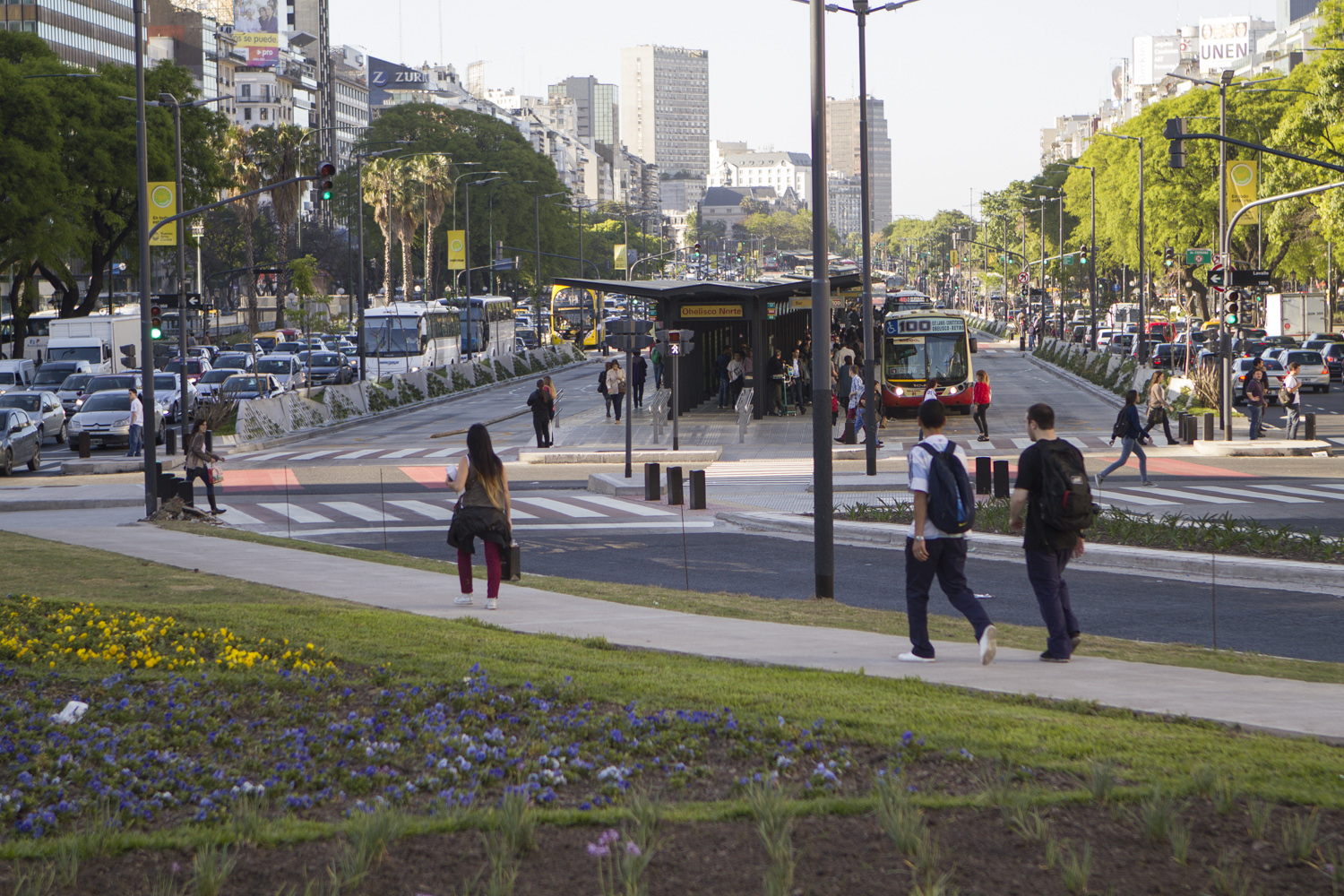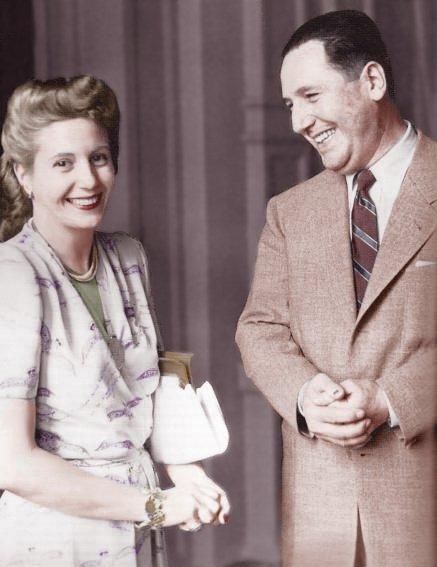|
Obelisco De Buenos Aires
The Obelisco de Buenos Aires (Obelisk of Buenos Aires) is a national historic monument and icon of Buenos Aires. Located in the Plaza de la República in the intersection of avenues Corrientes and 9 de Julio, it was erected in 1936 to commemorate the quadricentennial of the first foundation of the city. History Construction began on March 20, 1936, and it was finished on May 23 of the same year.Julio A. Luqui Lagleyze, ''Plazas de Buenos Aires'', Revista Todo es Historia, Nro 90, noviembre de 1974 It was designed by architect Alberto Prebisch (one of the main architects of the Argentine modernism who also designed the Teatro Gran Rex, in Corrientes and Suipacha) at the request of the mayor Mariano de Vedia y Mitre (appointed by president Agustín Pedro Justo). For its construction, which cost 200,000 pesos moneda nacional, of concrete and of Olaen white stone from Córdoba were used. The obelisk was built by the German company G.E.O.P.E. - Siemens Bauunion - Grün & Bilfi ... [...More Info...] [...Related Items...] OR: [Wikipedia] [Google] [Baidu] |
Avenida 9 De Julio
July 9 Avenue (Spanish: ''Avenida 9 de Julio'') is a major thoroughfare in the city centre of Buenos Aires, Argentina. Its name honors Argentina's Independence Day, July 9, 1816. The avenue runs around to the west of the Río de la Plata waterfront, from the Retiro district in the north to Constitución station in the south. The avenue has up to seven lanes in each direction and is flanked on either side by parallel streets of two lanes each. Through the centre of the avenue runs one of the city's Metrobus (Bus rapid transit) corridors, which stretches and was inaugurated in July 2013. There are two wide medians between the side streets and the main road. It is currently the widest avenue in the world. The northern end of the avenue is connected to the Arturo Illia expressway (which connects to Jorge Newbery airport and the Pan-American highway) and to Libertador avenue. The southern end is connected to the 25 de Mayo tollway (serving the west side of Greater Buenos Aires a ... [...More Info...] [...Related Items...] OR: [Wikipedia] [Google] [Baidu] |
Córdoba, Argentina
Córdoba () is a city in central Argentina, in the foothills of the Punilla Valley, Sierras Chicas on the Primero River, Suquía River, about northwest of Buenos Aires. It is the capital of Córdoba Province, Argentina, Córdoba Province and the List of cities in Argentina by population, second most populous city in Argentina after Buenos Aires, with about 1.3 million inhabitants according to the 2010 census. It was founded on 6 July 1573 by Jerónimo Luis de Cabrera, who named it after Córdoba, Spain. It was one of the early Spanish colonial capitals of the region that is now Argentina (the oldest city is Santiago del Estero, founded in 1553). The National University of Córdoba is the oldest university of the country. It was founded in 1613 by the Society of Jesus, Jesuit Order. Because of this, Córdoba earned the nickname ''La Docta'' ("the learned"). Córdoba has many historical monuments preserved from Spanish colonization of the Americas, Spanish colonial rule, espe ... [...More Info...] [...Related Items...] OR: [Wikipedia] [Google] [Baidu] |
World AIDS Day
World AIDS Day, designated on 1 December every year since 1988, is an international day dedicated to raising awareness of the AIDS pandemic caused by the spread of HIV infection and mourning those who have died of the disease. The acquired immunodeficiency syndrome (AIDS) is a life-threatening condition caused by the human immunodeficiency virus (HIV). The HIV virus attacks the immune system of the patient and reduces its resistance to other diseases. Government and health officials, non-governmental organizations, and individuals around the world observe the day, often with education on AIDS prevention and control. World AIDS Day is one of the eleven official global public health campaigns marked by the World Health Organization (WHO), along with World Health Day, World Blood Donor Day, World Immunization Week, World Tuberculosis Day, World No Tobacco Day, World Malaria Day, World Hepatitis Day, World Antimicrobial Awareness Week, World Patient Safety Day and World Chaga ... [...More Info...] [...Related Items...] OR: [Wikipedia] [Google] [Baidu] |
Graffiti
Graffiti (plural; singular ''graffiti'' or ''graffito'', the latter rarely used except in archeology) is art that is written, painted or drawn on a wall or other surface, usually without permission and within public view. Graffiti ranges from simple written words to elaborate wall paintings, and has existed Graffito (archaeology), since ancient times, with examples dating back to ancient Egypt, ancient Greece, and the Roman Empire. Graffiti is a controversial subject. In most countries, marking or painting property without permission is considered by property owners and civic authorities as defacement and vandalism, which is a punishable crime, citing the use of graffiti by street gangs to mark territory or to serve as an indicator of gang-related activities. Graffiti has become visualized as a growing urban "problem" for many cities in industrialized nations, spreading from the New York City Subway nomenclature, New York City subway system and Philadelphia in the early 1970s to ... [...More Info...] [...Related Items...] OR: [Wikipedia] [Google] [Baidu] |
Noise
Noise is unwanted sound considered unpleasant, loud or disruptive to hearing. From a physics standpoint, there is no distinction between noise and desired sound, as both are vibrations through a medium, such as air or water. The difference arises when the brain receives and perceives a sound. Acoustic noise is any sound in the acoustic domain, either deliberate (e.g., music or speech) or unintended. In contrast, noise in electronics may not be audible to the human ear and may require instruments for detection. In audio engineering, noise can refer to the unwanted residual electronic noise signal that gives rise to acoustic noise heard as a hiss. This signal noise is commonly measured using A-weighting or ITU-R 468 weighting. In experimental sciences, noise can refer to any random fluctuations of data that hinders perception of a signal. Measurement Sound is measured based on the amplitude and frequency of a sound wave. Amplitude measures how forceful the wave is. The e ... [...More Info...] [...Related Items...] OR: [Wikipedia] [Google] [Baidu] |
Isabel Perón
Isabel Martínez de Perón (, born María Estela Martínez Cartas, 4 February 1931), also known as Isabelita, is an Argentine politician who served as President of Argentina from 1974 to 1976. She was one of the first female republican heads of state in the world, and the first woman to serve as president of a country. Isabel Perón was the third wife of President Juan Perón. During her husband's third term as president from 1973 to 1974, she served as both Vice President and First Lady of Argentina. Following her husband's death in office in 1974, she served as President for almost two years before the military took over the government with the 1976 coup. Perón was then placed under house arrest for five years before she was exiled to Spain in 1981. In 2007 an Argentine judge ordered Perón's arrest over the forced disappearance of an activist in February 1976, on the grounds that the disappearance was authorized by her signing of decrees allowing Argentina's armed for ... [...More Info...] [...Related Items...] OR: [Wikipedia] [Google] [Baidu] |
Peronism
Peronism, also called justicialism,. The Justicialist Party is the main Peronist party in Argentina, it derives its name from the concept of social justice., name=, group= is an Argentine political movement based on the ideas and legacy of Argentine ruler Juan Perón (1895–1974). It has been an influential movement in 20th and 21st century Argentine politics. Since 1946, Peronists have won 10 out of the 13 presidential elections in which they have been allowed to run. The main Peronist party is the Justicialist Party. The policies of Peronist presidents have differed greatly, but the general ideology has been described as "a vague blend of nationalism and labourism" or populism. Perón became Argentina's labour secretary after participating in the 1943 military coup and was elected president of Argentina in 1946. He introduced social programs that benefited the working class, supported labor unions and called for additional involvement of the state in the economy. I ... [...More Info...] [...Related Items...] OR: [Wikipedia] [Google] [Baidu] |
Christmas Tree
A Christmas tree is a decorated tree, usually an evergreen conifer, such as a spruce, pine or fir, or an artificial tree of similar appearance, associated with the celebration of Christmas. The custom was further developed in early modern Germany where German Protestant Christians brought decorated trees into their homes. It acquired popularity beyond the Lutheran areas of Germany and the Baltic governorates during the second half of the 19th century, at first among the upper classes. The tree was traditionally decorated with "roses made of colored paper, apples, wafers, tinsel, nd sweetmeats". Moravian Christians began to illuminate Christmas trees with candles, which were often replaced by Christmas lights after the advent of electrification. Today, there is a wide variety of traditional and modern ornaments, such as garlands, baubles, tinsel, and candy canes. An angel or star might be placed at the top of the tree to represent the Angel Gabriel or the Star of ... [...More Info...] [...Related Items...] OR: [Wikipedia] [Google] [Baidu] |
Flag Of Argentina
The national flag of the Argentine Republic is a triband, composed of three equally wide horizontal bands coloured light blue and white. There are multiple interpretations on the reasons for those colors. The flag was created by Manuel Belgrano, in line with the creation of the Cockade of Argentina, and was first raised at the city of Rosario on February 27, 1812, during the Argentine War of Independence. The National Flag Memorial was later built on the site. The First Triumvirate did not approve the use of the flag, but the Asamblea del Año XIII allowed the use of the flag as a war flag. It was the Congress of Tucumán which finally designated it as the national flag, in 1816. A yellow Sun of May was added to the center in 1818. The full flag featuring the sun is called the Official Ceremonial Flag (). The flag without the sun is considered the Ornamental Flag (). While both versions are equally considered the national flag, the ornamental version must always be h ... [...More Info...] [...Related Items...] OR: [Wikipedia] [Google] [Baidu] |
Roberto María Ortiz
Jaime Gerardo Roberto Marcelino María Ortiz Lizardi (24 September 1886 – 15 July 1942) was the 19th President of Argentina from 20 February 1938 to 27 June 1942. Ortiz is a little remembered president. He became president in 1938 following a presidential election that has been described as being among the most fraudulent in Argentine history. His main management objective was to end fraud. The attempt to normalize the institutions confronted him with his vice president, Ramón Castillo, leader of the conservative sectors of the government coalition. The president and vice president belonged to different political groupings. Ortiz was a radical antipersonnel and Castillo, a conservative in the National Democratic Party. Both were part of the formula of Concordancia, a coalition that had ruled since 1932. Life Ortiz was born in Buenos Aires on 24 September 1886. As a student at the University of Buenos Aires, he participated in the unsuccessful Argentine Revolution of 1 ... [...More Info...] [...Related Items...] OR: [Wikipedia] [Google] [Baidu] |
Window
A window is an opening in a wall, door, roof, or vehicle that allows the exchange of light and may also allow the passage of sound and sometimes air. Modern windows are usually glazed or covered in some other transparent or translucent material, a sash set in a frame in the opening; the sash and frame are also referred to as a window. Many glazed windows may be opened, to allow ventilation, or closed, to exclude inclement weather. Windows may have a latch or similar mechanism to lock the window shut or to hold it open by various amounts. In addition to this, many modern day windows may have a window screen or mesh, often made of aluminum or fibreglass, to keep bugs out when the window is opened. Types include the eyebrow window, fixed windows, hexagonal windows, single-hung, and double-hung sash windows, horizontal sliding sash windows, casement windows, awning windows, hopper windows, tilt, and slide windows (often door-sized), tilt and turn windows, transom windo ... [...More Info...] [...Related Items...] OR: [Wikipedia] [Google] [Baidu] |







